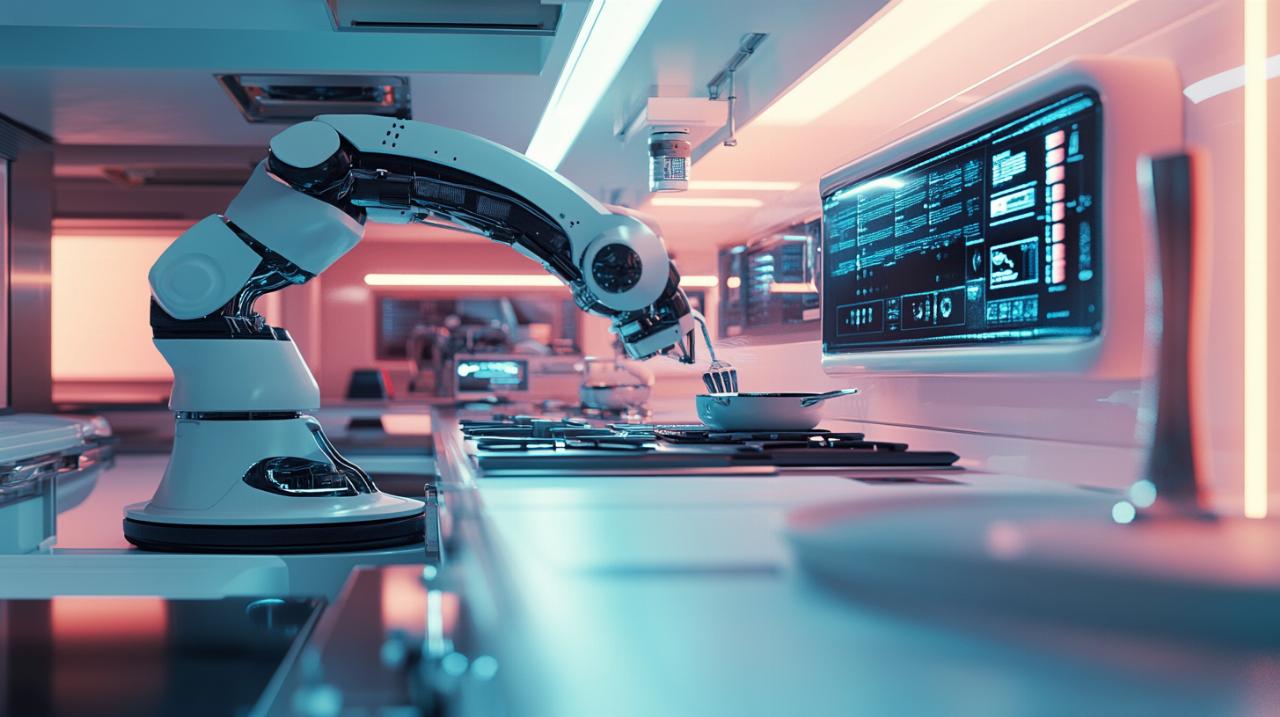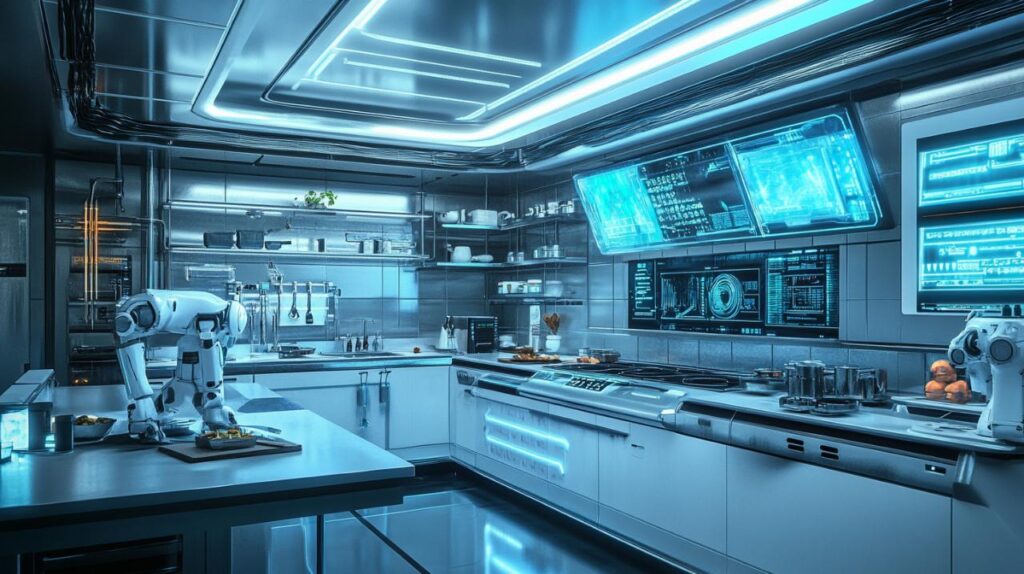Professional kitchens are witnessing a remarkable transformation as robotic technology increasingly takes centre stage in food preparation and service. From standalone units capable of executing thousands of recipes to sophisticated systems designed for high-volume production environments, these mechanical assistants are reshaping how culinary professionals approach their craft. Understanding which robotic solution best suits your particular requirements demands careful consideration of both your operational needs and the capabilities each system brings to the table.
Understanding your kitchen requirements and tasks
Before investing in any automated cooking system, establishing a clear picture of what you actually need from such equipment proves essential. Professional kitchen robots vary enormously in their capabilities, ranging from relatively straightforward food processors to elaborate installations featuring multiple robotic arms mounted on ceiling rails. The Moley Robotic Kitchen, developed by a London-based company, represents one of the most ambitious examples, offering access to over five thousand recipes through an intuitive touchscreen interface. Users simply select their desired dish and provide the necessary ingredients, whilst the robotic arms handle the entire cooking process. Chef Tim Anderson contributed to its development by having his cooking movements meticulously recorded and replicated, ensuring the system captures authentic culinary technique. However, with a minimum cost of one hundred and fifty thousand pounds, such comprehensive solutions clearly target specific high-end applications rather than general professional use.
Identifying essential food preparation functions
Determining which cooking functions matter most to your operation helps narrow the field considerably. Some establishments require equipment primarily for repetitive tasks such as chopping, blending, or mixing, where traditional professional food processors might suffice. Others may benefit from more advanced automation systems capable of handling complete meal assembly. Pazzi, a French pizza chain, has demonstrated the potential of focused robotic solutions by deploying machines that manage the entire pizza-making process in approximately five minutes across three locations. Their system has generated substantial interest, with over one thousand enquiries from potential clients in Italy, the United Kingdom, the United States, and Germany. This targeted approach to automation showcases how identifying specific preparation tasks can lead to more practical and cost-effective solutions than attempting to automate everything at once. If you want to explore more insights on kitchen automation and equipment selection, you might want to visit shopline blog for additional perspectives on commercial kitchen technology. The ChefRobot Ultracook offers a more accessible entry point, featuring fifteen functions and a three-litre bowl capacity alongside a seven-inch touchscreen, all at a price point of six hundred and forty-nine pounds, making it suitable for operations requiring versatility without extraordinary capital investment.
Assessing your daily cooking volume and workflow
The scale of your daily operations significantly influences which robotic solutions make practical sense. High-volume commercial kitchens face different challenges than boutique restaurants or catering operations. Standard Bots addresses larger food production requirements with their RO1 robot, designed to handle packaging, assembly, and machine tending tasks that complement cooking processes. Their Core model carries an eighteen-kilogramme payload with a one-point-three-metre reach, whilst the Thor variant manages thirty kilogrammes with a two-metre reach and an IP69K rating for enhanced durability in demanding environments. These industrial robots prove particularly valuable for food production facilities where consistent handling of ingredients and finished products matters as much as the cooking itself. Restaurant automation extends beyond simply preparing food, encompassing the entire workflow from ingredient preparation through packaging. Understanding your peak service periods, the variety of dishes you regularly prepare, and how many covers you typically serve helps determine whether you need a comprehensive robotic kitchen system or more modest automation that handles specific bottlenecks in your workflow.
Evaluating practical considerations for professional kitchen robots

Beyond assessing functional requirements, several practical factors dramatically influence whether a particular robotic system proves viable for your kitchen. Space constraints, financial considerations, and ongoing operational costs all play crucial roles in determining which solution ultimately delivers the best value for your specific circumstances.
Space Planning and Budget Allocation for Kitchen Equipment
Professional kitchen real estate comes at a premium, making the physical footprint of any new equipment a critical consideration. Whilst companies like Moley Robotics have developed ceiling-mounted systems that theoretically preserve floor space, they require substantial vertical clearance and structural support that many existing kitchens simply cannot accommodate. More compact solutions such as the ChefRobot Ultracook occupy countertop space comparable to traditional food processors, making them easier to integrate into established layouts. Budget allocation presents equally important considerations, with professional cooking robots spanning an enormous price range. The ChefRobot Ultracook sits at the accessible end at six hundred and forty-nine pounds, whilst comprehensive systems like the Moley Robotic Kitchen command a minimum of one hundred and fifty thousand pounds. Standard Bots positions its offerings in the mid-range, with the Core model listed at twenty-nine thousand three hundred and twenty-one pounds and the Thor at thirty-six thousand two hundred and seventy-six pounds. These figures represent substantial capital investments that must be weighed against anticipated productivity gains, labour cost savings, and the competitive advantages automation might deliver. Many suppliers now offer consultation processes, including introductory calls, tailored implementation plans, and trial periods extending up to thirty days, allowing kitchens to evaluate systems before committing fully.
Maintenance requirements and long-term operational costs
The initial purchase price represents only part of the total cost of ownership for professional kitchen robots. Ongoing maintenance, repairs, software updates, and operator training all contribute to long-term expenses that significantly impact return on investment. Robotic systems incorporating advanced sensors and artificial intelligence, similar to technologies like GPT-4 used in Standard Bots' RO1 for adaptive learning, typically require regular software updates to maintain optimal performance and security. Mechanical components such as robotic arms, motors, and precision tools need periodic servicing to ensure consistent operation, particularly in demanding commercial environments where equipment runs for extended periods daily. Hygiene standards in professional kitchens add another layer of complexity, as automation systems must withstand rigorous cleaning protocols without degradation. Experts suggest that robot chefs could actually improve cleanliness and hygiene in restaurants by reducing human contact with food and maintaining consistent sanitation practices. However, achieving these benefits requires equipment designed specifically to tolerate commercial kitchen cleaning regimens. Some restaurant owners, particularly those in fine dining, express concerns that robots cannot replicate the human touch essential to creating exceptional culinary experiences. This perspective highlights an important consideration: automation works best when it complements rather than replaces skilled culinary professionals, handling repetitive or physically demanding tasks whilst freeing chefs to focus on creativity and refinement. Evaluating customer feedback and looking for consistent patterns in reported advantages and challenges helps identify which systems deliver reliable long-term performance versus those that might prove problematic after the initial enthusiasm fades.


